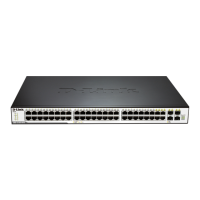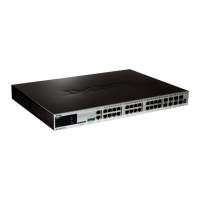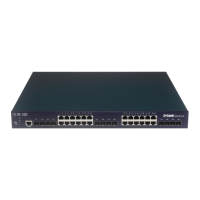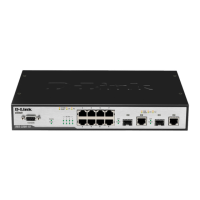xStack® DES-3528/DES-3552 Series Layer 2 Managed Stackable Fast Ethernet Switch Web UI Reference Guide
295
When a DNS server receives a query, it checks to see if the name is in its sub domain. If it is, the server translates
the name and appends the answer to the query, and sends it back to the client. If the DNS server cannot translate
the name, it determines what type of name resolution the client requested. A complete translation is called
recursive resolution and requires the server to contact other DNS servers until the name is resolved. Iterative
resolution specifies that if the DNS server cannot supply an answer, it returns the address of the next DNS server
the client should contact.
Each client must be able to contact at least one DNS server, and each DNS server must be able to contact at least
one root server.
The address of the machine that supplies domain name service is often supplied by a DHCP or BOOTP server, or
can be entered manually and configured into the operating system at startup.
DNS Relay Global Settings
To configure the DNS function on the Switch, click Network Application > DNS > DNS Relay > DNS Relay
Global Settings, as shown below:
Figure 9-20 DNS Relay Global Settings window
The fields that can be configured are described below:
Parameter Description
DNS Relay Status This field can be toggled between Disabled and Enabled using the pull-down menu, and
is used to enable or disable the DNS Relay service on the Switch.
Primary Name Server
Allows the entry of the IP address of a primary domain name server (DNS).
Secondary Name
Server
Allows the entry of the IP address of a secondary domain name server (DNS).
DNS Relay Cache
Status
This can be toggled between Disabled and Enabled. This determines if a DNS cache will
be enabled on the Switch.
DNS Relay Static
Table State
This field can be toggled using the pull-down menu between Disabled and Enabled. This
determines if the static DNS table will be used or not.
Click Apply to implement changes made.
DNS Relay Static Settings
To view this window, click Network Application > DNS > DNS Relay > DNS Relay Static Settings, as shown
below:
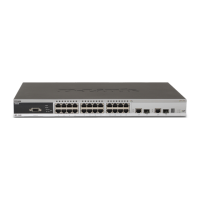
